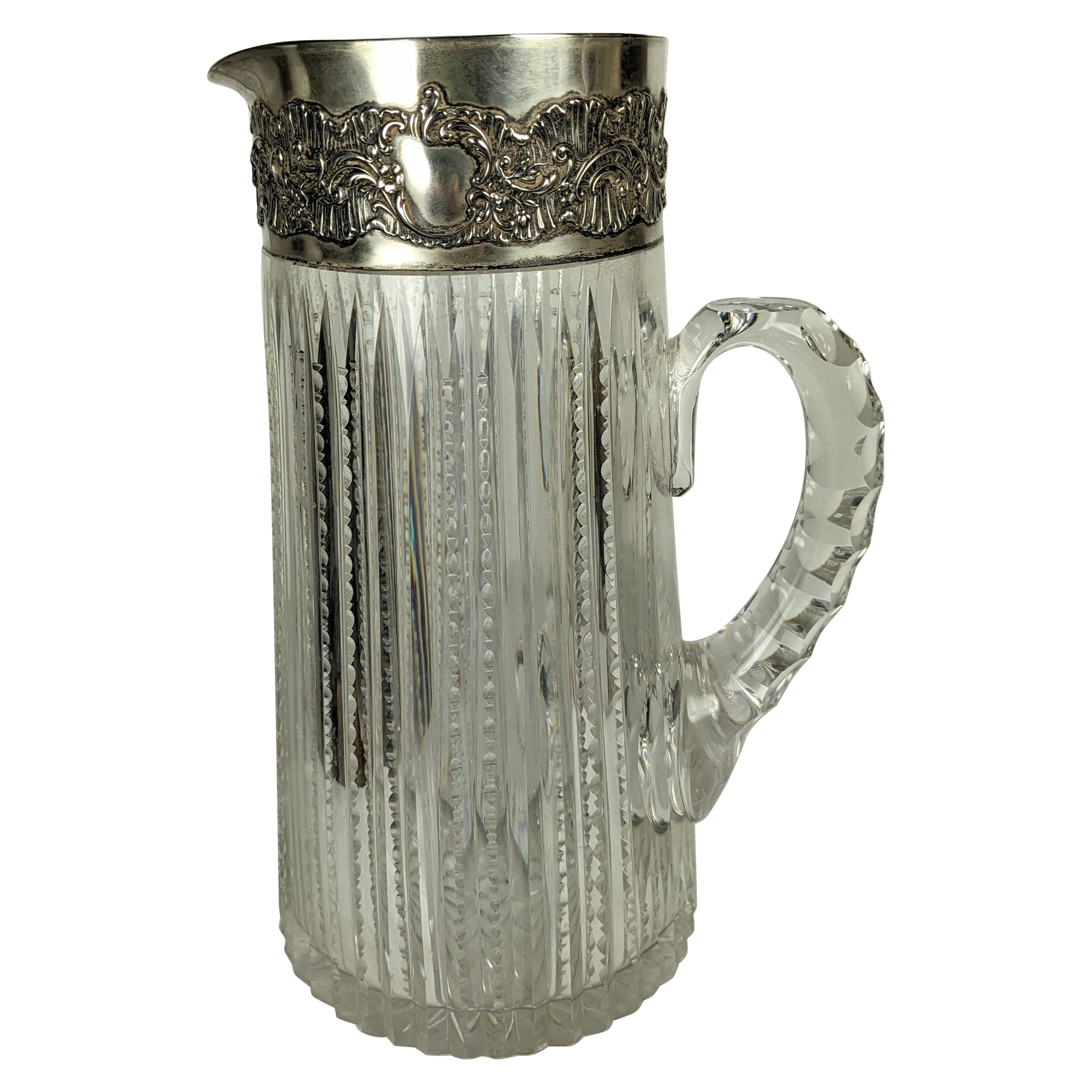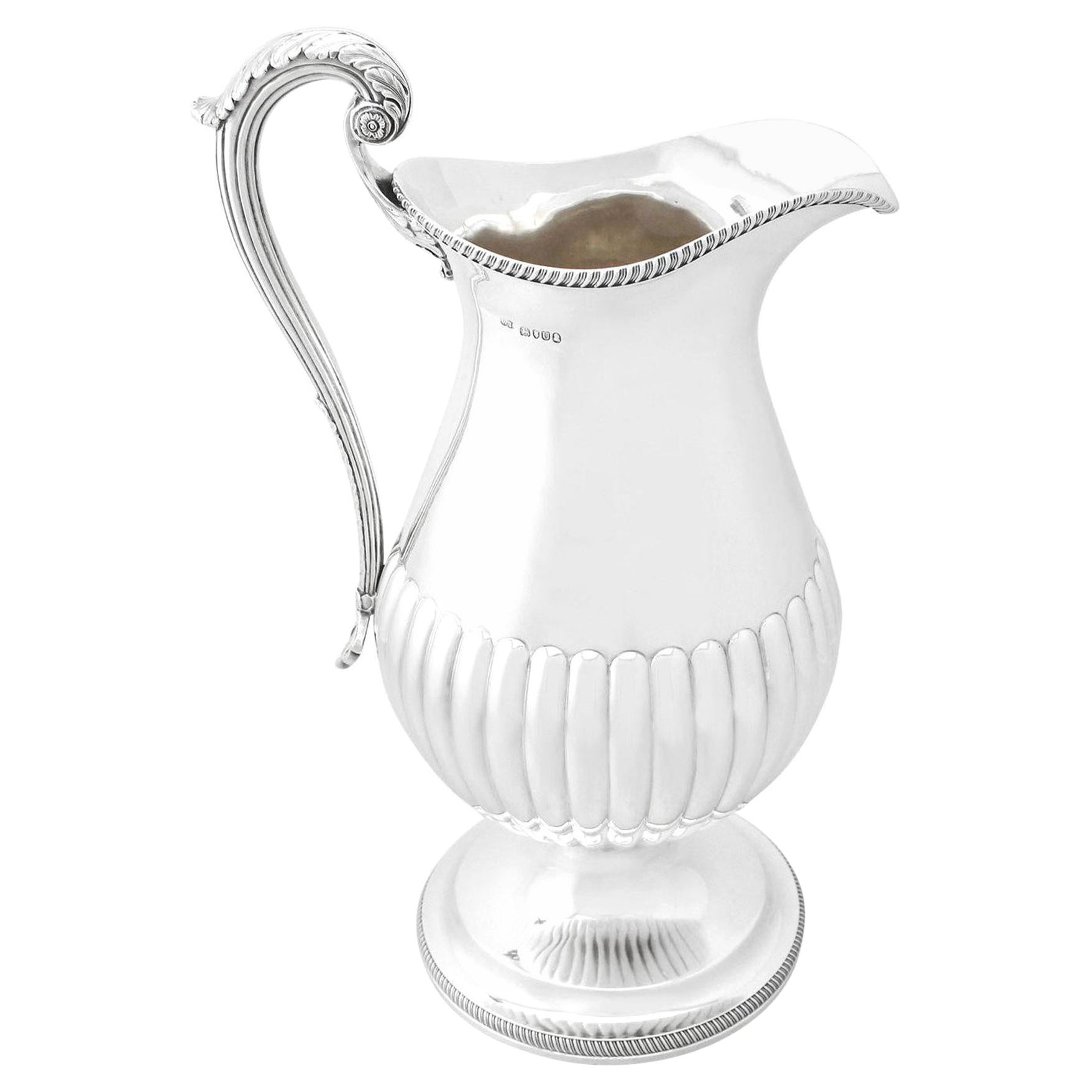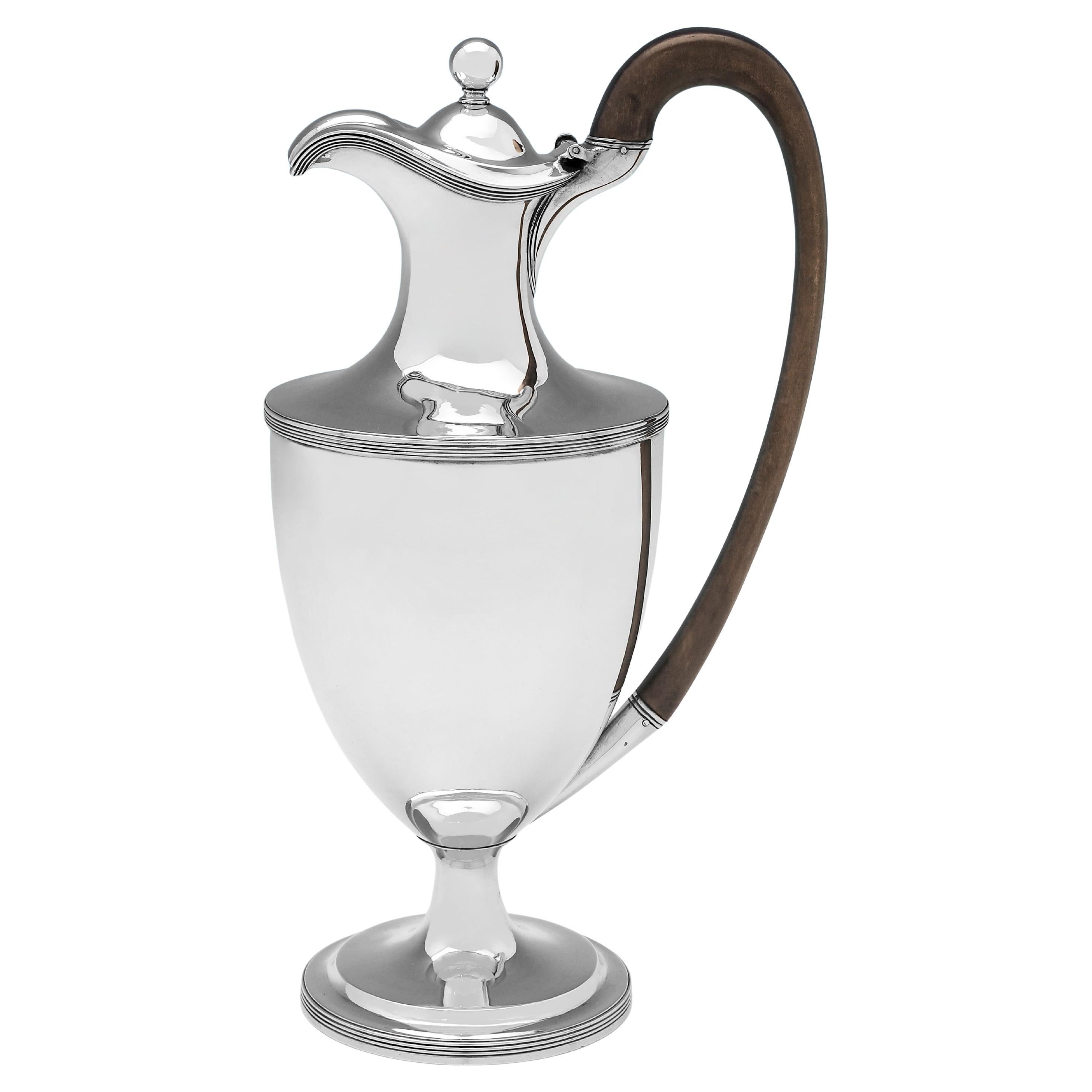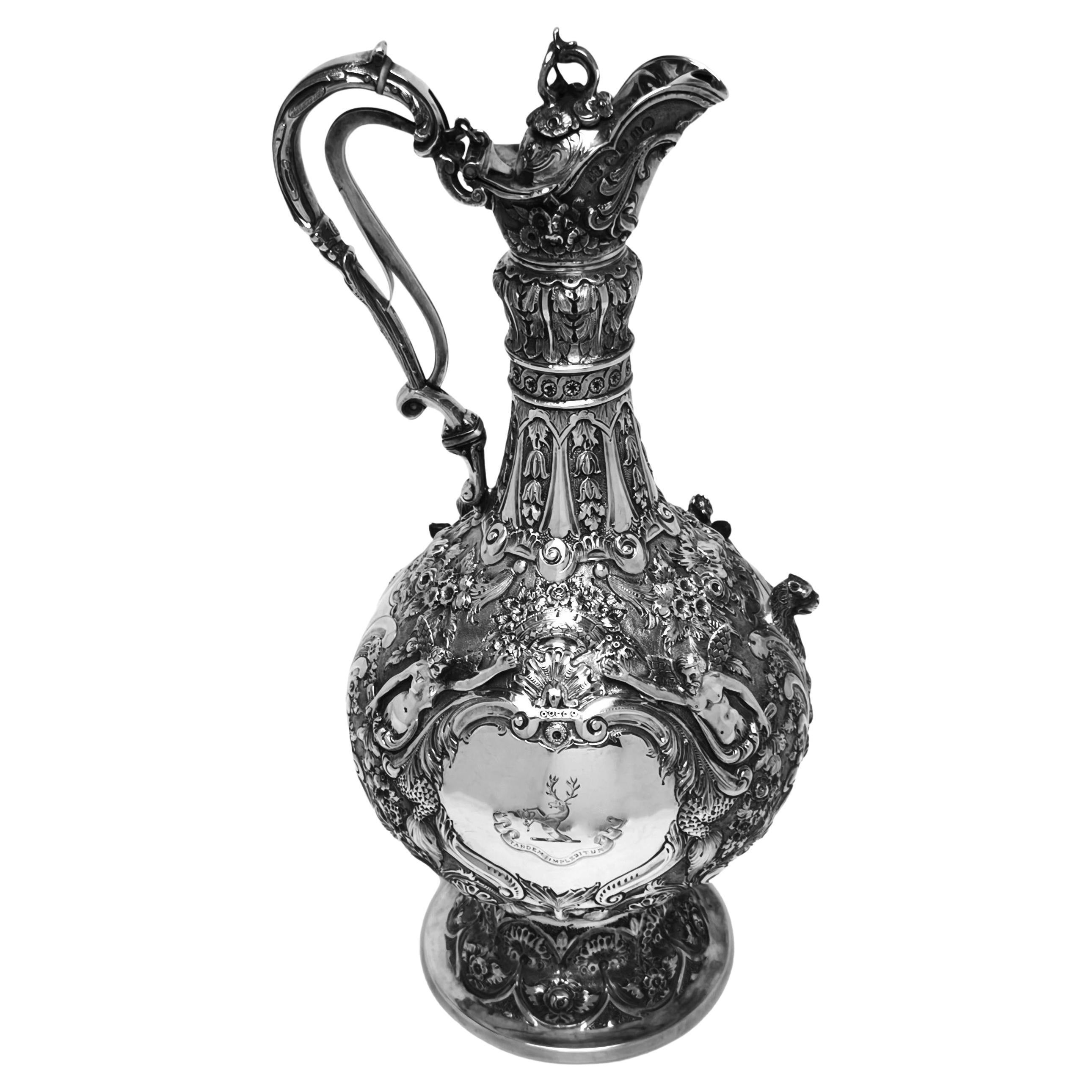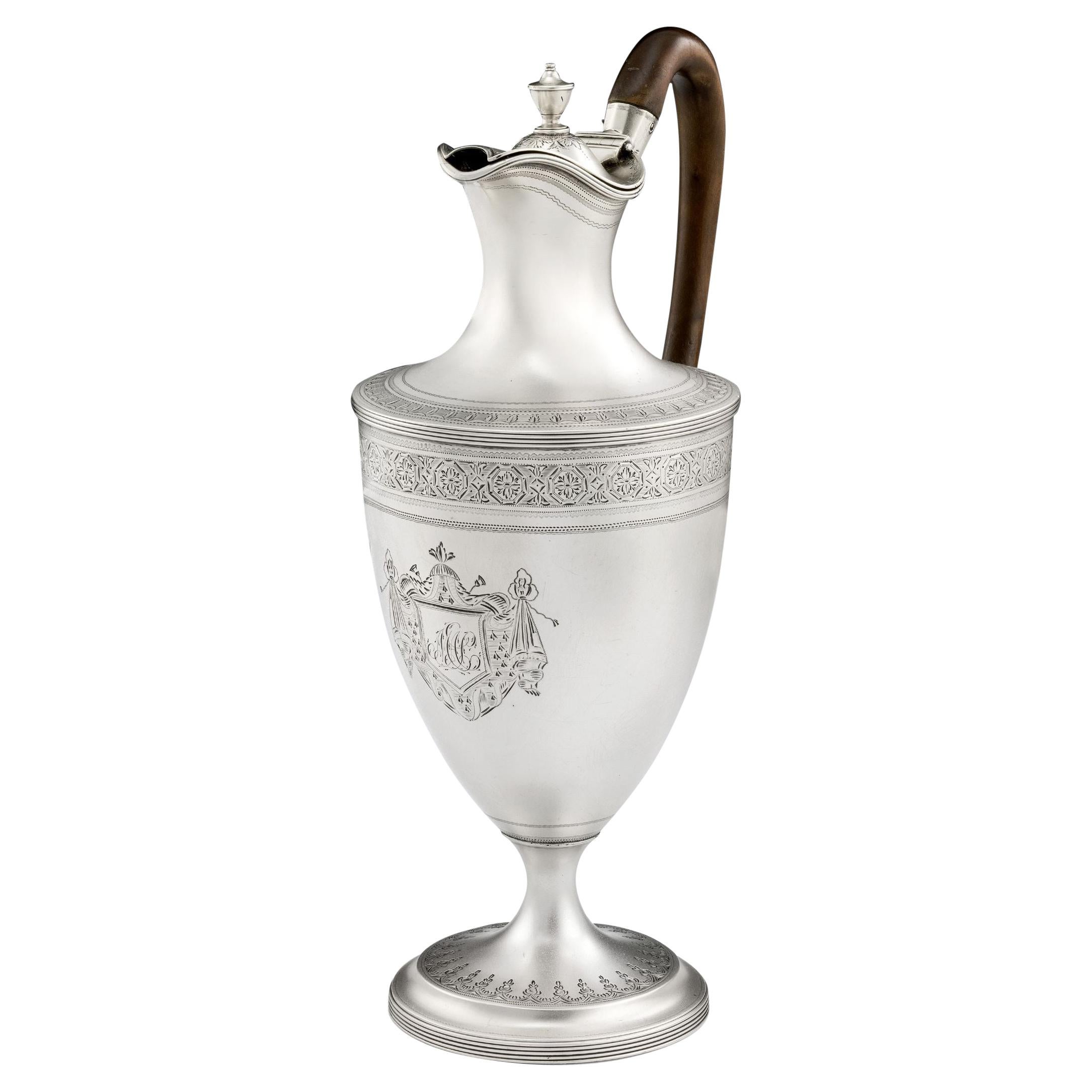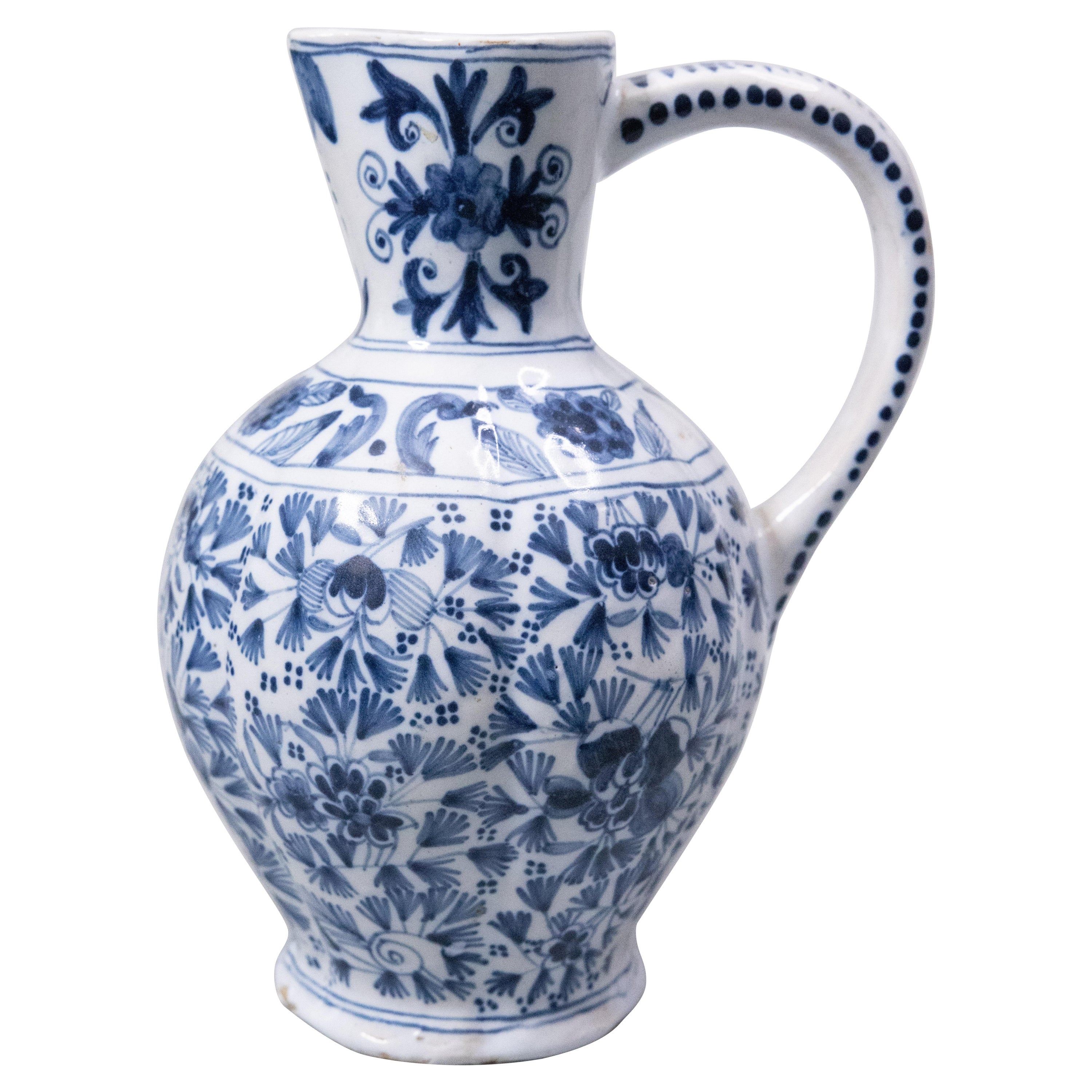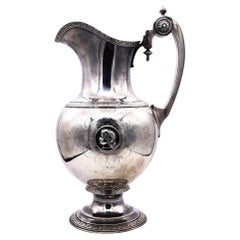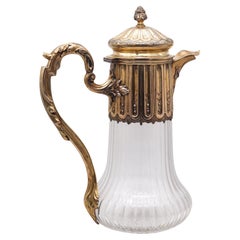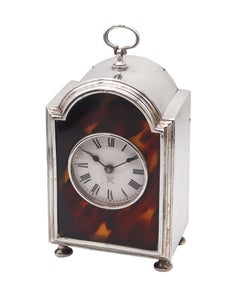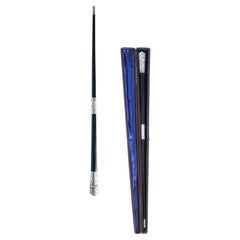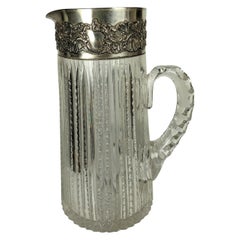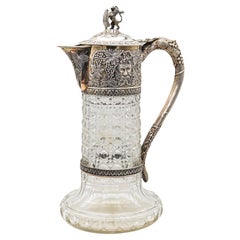
Charles Boyton 1899 London Wine Ewer Pitcher In Cut Crystal And .925 Sterling
View Similar Items
Want more images or videos?
Request additional images or videos from the seller
1 of 13
Charles Boyton 1899 London Wine Ewer Pitcher In Cut Crystal And .925 Sterling
$5,250List Price
About the Item
- Creator:Charles Boyton (Maker)
- Dimensions:Height: 11.1 in (28.2 cm)Width: 7.5 in (19.05 cm)Depth: 5.6 in (14.23 cm)
- Style:Late Victorian (Of the Period)
- Materials and Techniques:
- Place of Origin:
- Period:
- Date of Manufacture:1899
- Condition:Wear consistent with age and use. The overall condition of this wine ewer is excellent. Beside the little normal wear, there is no damage to the silver or the crystal. All parts are secured in the settings. This piece has been carefully inspected to guarantee condition & authentic.
- Seller Location:Miami, FL
- Reference Number:Seller: D010524MNNA/32.091stDibs: LU8303237817572
About the Seller
5.0
Gold Seller
Premium sellers maintaining a 4.3+ rating and 24-hour response times
1stDibs seller since 2023
203 sales on 1stDibs
Typical response time: 2 hours
Authenticity Guarantee
In the unlikely event there’s an issue with an item’s authenticity, contact us within 1 year for a full refund. DetailsMoney-Back Guarantee
If your item is not as described, is damaged in transit, or does not arrive, contact us within 7 days for a full refund. Details24-Hour Cancellation
You have a 24-hour grace period in which to reconsider your purchase, with no questions asked.Vetted Professional Sellers
Our world-class sellers must adhere to strict standards for service and quality, maintaining the integrity of our listings.Price-Match Guarantee
If you find that a seller listed the same item for a lower price elsewhere, we’ll match it.Trusted Global Delivery
Our best-in-class carrier network provides specialized shipping options worldwide, including custom delivery.More From This Seller
View AllWilliam Gale & Son 1856 New York Etruscan Medallion Wine Pitcher Ewer Sterling
By William Gale, William Gale
Located in Miami, FL
Medallion wine ewer designed by William Gale & Son.
Very rare and important piece of the American silversmith history. This fabulous wine ewer was made by the William Gale & Son Company, just five years before the American Civil War (1861-1865) in the 1856. The rich design and the delicate composition reflects the extreme opulence of the northern United States in these period and the degree of sophistication when serving a table.
By other part, this wine ewer is full of symbolisms, where the degree of knowledge and understanding of the characters of Greek and Roman mythology is demonstrated.
This one-of-a-kind piece was carefully crafted with impeccable details in solid .925/.999 sterling silver. It is fully decorated with ancient Etruscan and Greek revival patterns and architectural neo-classic elements, such the small two balusters and the rosettes located in the handle.
The most significant are the two medallions depicting the classical figures of the helmeted & bearded portrait bust of Dionysus and the portrait bust of his daughter Methe, wearing a diadem made of vine leaves.
This rare pitcher has a total weight of 750.43 grams and a measure of 12 by 7.5 inches (30.5 x 19 cm). The base has a diameter of 4.75 inches (12 cm).
Fully stamped in the underneath, with the silver assay hallmarks, the maker's cartouche GS, the year of production 1856 and signed in full, "W. GALE & SON NEW YORK .925 STERLING GS 1856".
Dionysus, (Bacchus for the Romans), was the god of the grape-harvest, winemaking and wine, of fertility, orchards and fruit, vegetation, insanity, ritual madness, religious ecstasy, festivity and theatre in the ancient Greek culture. The iconographic theme on this sheet refer to the legend of the triumph of Dionysus, or as the Romans called him, Bacchus the god of the grape harvest, winemaking and wine, the son of Zeus and Semele. The Bacchanalia was a religious festival in honor of the wine god, Dionysus.
Methe, was the goddess-nymph of drunkenness in the ancient Greek mythology. She was the daughter and companion of the god Dionysus. She was also the wife of Staphylos (bunch of grapes) and mother of Botrys (grapes).
History: The founder of the firm was William Gale (1799-1867) and the company was located in the number 447 at Broome street in New York. W. Gale invented and patented in 1826 a process for making spoons with ornamental patterns by cutting the ornament on rollers, both the upper and the lower rollers being cut with the pattern. this made the production of pattern spoons much less expensive than the former method of hand hammering patterns by the use of dies. William Gale was succeeded in the business by his son William Gale Jr. (1825-1885) who, after few years, ceased the control of the firm to H.B. Dominick & Leroy B. Haff until 1928 when the business was finally purchased by Reed & Barton.
Note: The signature and hallmarks stamped at the bottom of this piece, correspond to the pieces produced before the US civil war...
Category
Antique 1850s American American Empire Sterling Silver
Materials
Silver, Sterling Silver
$5,320 Sale Price
20% Off
LEON LAPAR Paris 1895 Claret Wine Ewer Pitcher In Cut Crystal & Gilt .950
By L. Lapar Paris
Located in Miami, FL
Claret wine ewer designed by Léon Lapar.
This is a magnificent claret wine ewer pitcher created in Paris France at the silversmith atelier of Léon Lapar. The piece was masterfully c...
Category
Antique 1890s French Neoclassical Serving Pieces
Materials
Rock Crystal, Silver, Sterling Silver, Gold
$3,880 Sale Price
20% Off
CHARLES & RICHARD COMYNS London 1919 Table Clock In .925 Sterling Shell & Wood
By Charles and Richard Comyns
Located in Miami, FL
Desk table clock designed by Charles & Richard Comyns.
This is a beautiful desk clock created by the top notch and prestigious silversmith company of Charles & Richard Comyns. The c...
Category
Vintage 1910s English Art Deco Table Clocks and Desk Clocks
Materials
Silver, Sterling Silver, Enamel
$2,318 Sale Price
20% Off
CONDUCTOR'S BATON 1893 Antique Ebony Wood And .925 Sterling Silver In Case
Located in Miami, FL
Conductor's baton from the Victorian period.
This is a very interesting and elusive antique director's baton created in Devonshire England during the Victorian period, back in 1890....
Category
Antique 19th Century English Late Victorian Musical Instruments
Materials
Sterling Silver, Silver
$1,904 Sale Price / set
20% Off
JACOB MARSH 1766 London Coffee Pot In .925 Sterling Silver And Carved Wood
By Jacob Marsh
Located in Miami, FL
Coffee hot water pot designed in London by Jacob Marsh.
Very rare and important coffee and hot water pot of baluster form on circular spreading foot, created in the city of London i...
Category
Antique 1760s English Georgian Sterling Silver
Materials
Silver, Sterling Silver
$4,788 Sale Price
20% Off
Asprey London Massive Modernist Decorative Vase in Solid .925 Sterling Silver
By Asprey & Garrard Limited
Located in Miami, FL
Silver vase designed by Asprey of London.
A gorgeous oversize spherical decorative vase, created in London England by Asprey. It was crafted with m...
Category
Early 2000s English Modern Sterling Silver
Materials
Silver, Sterling Silver
$6,228 Sale Price
20% Off
You May Also Like
Very stylish Victorian antique sterling silver wine ewer - London 1851
By Joseph Angell
Located in London, London
Hallmarked in London in 1851 by Joseph Angell, this stylish, Victorian, Antique Sterling Silver Wine Ewer, features shaped sides with engraved detailing, a scroll handle, and a gilt ...
Category
Antique 1850s English Aesthetic Movement Pitchers
Materials
Sterling Silver
Coconut shell and Sterling Silver Ewer / Pitcher
Located in Los Angeles, CA
Nice very elegant pitcher in a traditional luxury piece . marked 0.925 . posibbly made in the UK .Other countries marked Sterling as 0.925 like Mexico in the early Mid 20th Century a...
Category
Early 20th Century British Art Nouveau Pitchers
Materials
Sterling Silver
1960’s Silver Plated and Crystal Ewer or Pitcher
Located in LA CIOTAT, FR
This stunning mid-century modern pitcher is a true testament to
the era's love of sleek lines and elegant design. Crafted by the
renowned French brand "Étain du Manoir...
Category
Mid-20th Century French Pitchers
Materials
Crystal, Silver Plate
Edwardian Sterling Trimmed Cut Crystal Pitcher
By Reed & Barton
Located in Riverdale, NY
Elegant Edwardian Sterling Trimmed Cut Crystal Pitcher from the late 19th, early 20th Century. Striated Cut crystal carved with small divet patterns which are echoed on the handle. S...
Category
Antique Early 1900s American Edwardian Pitchers
Materials
Crystal, Sterling Silver
Antique Sterling Silver Wine Ewer Flagon
By William Bateman I
Located in Jesmond, Newcastle Upon Tyne
A magnificent, fine and impressive, large antique George IV sterling silver wine ewer/flagon made by William Bateman I; an addition to our range of collectable wine and drinks related silverware.
This magnificent antique George IV sterling silver flagon...
Category
Antique 1810s English George IV Pitchers
Materials
Sterling Silver
Antique Victorian 1843 English Sterling Silver Wine Ewer
By Samuel Hayne & Dudley Cater
Located in Jesmond, Newcastle Upon Tyne
A magnificent, fine and impressive, large antique Victorian English sterling silver wine ewer; part of our wine and drinks related silverware collecti...
Category
Antique 1840s British Victorian Pitchers
Materials
Sterling Silver
Recently Viewed
View AllMore Ways To Browse
Viners Ltd
Repousse Pitcher
Art Deco Ewers
Used Furniture Northampton
Sterling Wine Ewer
Silver Wine Victorian Pitcher
Wigmore Of London
Pitcher Lions Head
Charles Boyton And Son
Lane 900
Antique Wood Pitcher
Antique Pewter Pitcher
Swedish Ceramic Pitcher
Staffordshire Pitcher
White Water Pitcher
Silver On Copper Pitcher
Doulton Jugs
Hungarian Pitcher


